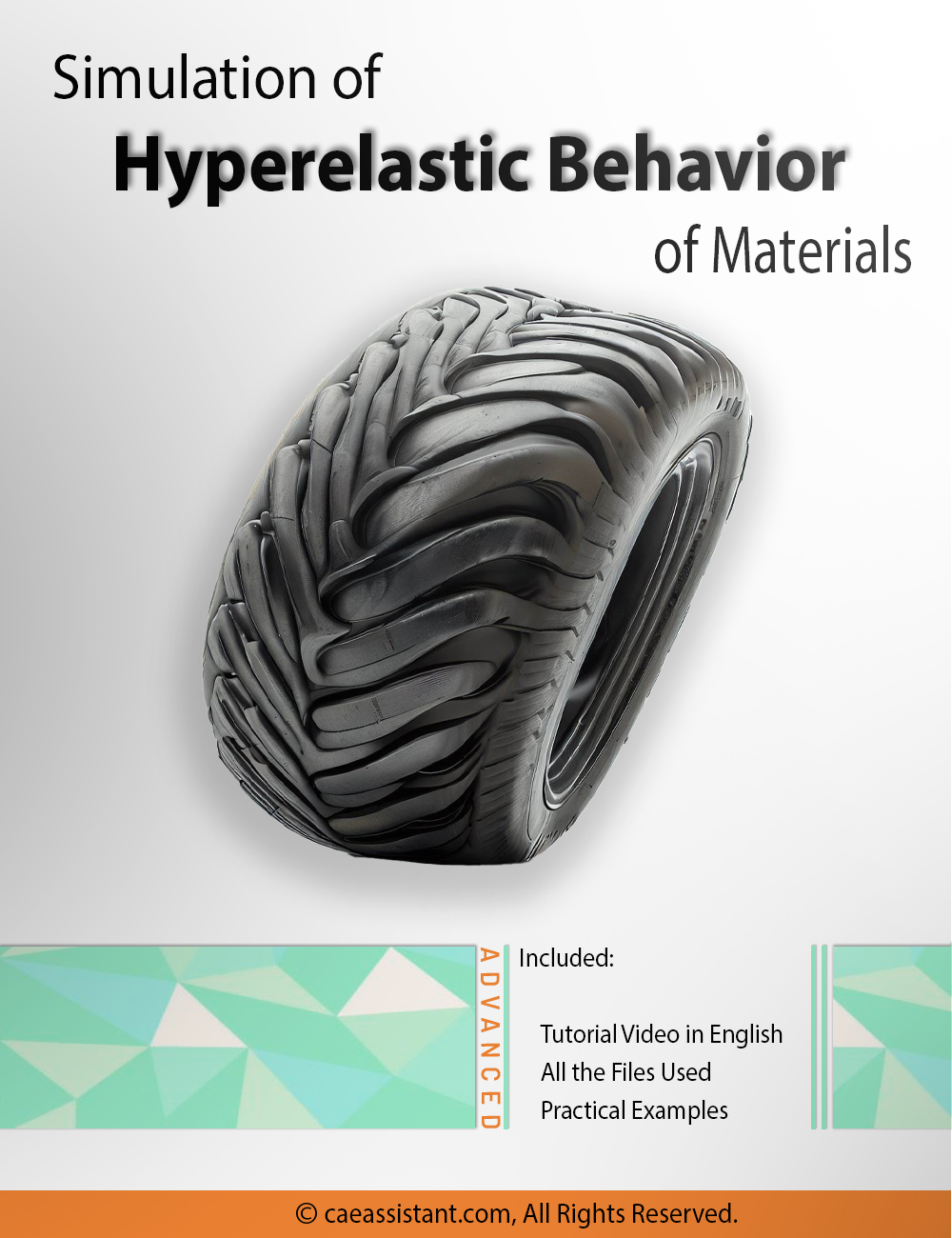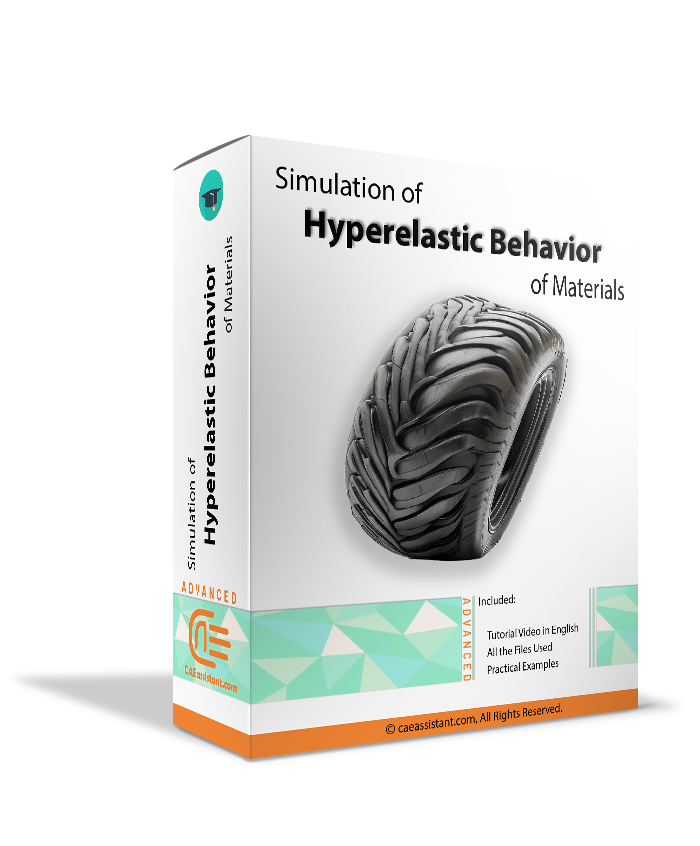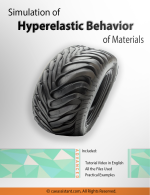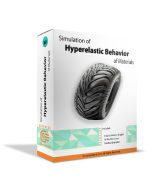What is Hyperelastic Deformation?
Hyperelastic deformation refers to the unique way that soft materials, such as polymers and hydrogels, change their shape when subjected to forces. Unlike rigid materials, which might break or permanently change shape, hyperelastic materials can stretch and squish in a reversible manner. This behavior is described by special equations called strain-energy equations, which help us understand and predict how these materials will deform when forces are applied. In the context of simulations using tools like Abaqus, hyperelastic deformation involves accurately modeling and replicating this stretchy behavior to simulate how these materials respond to various conditions.
Hyperelastic Deformation Simulation in ABAQUS
Why do we need to simulate Hyperelastic Behavior of Materials in Abaqus?
Simulating the hyperelastic behavior of materials in Abaqus serves several important purposes:
- Design and Optimization: Understanding how soft materials deform under different conditions is crucial for designing products that perform well. By simulating their hyperelastic behavior, engineers and designers can optimize product designs for specific applications, ensuring they can withstand various forces and deformations without breaking or failing.
- Cost and Time Efficiency: Traditional experimental testing can be time-consuming and expensive, especially for soft materials that might require specialized equipment. Simulation allows engineers to explore different scenarios and design iterations virtually, saving both time and costs associated with physical testing.
- Predicting Performance: Simulations provide insights into how materials will behave in situations that might be difficult to replicate experimentally. This predictive capability is especially valuable when working with complex geometries or challenging environmental conditions.
- Parametric Studies: Simulating hyperelastic behavior allows for conducting parametric studies, where the effect of changing parameters can be explored systematically. This helps identify optimal material configurations or design choices.
- Research and Innovation: Simulations enable researchers to investigate novel materials and designs without the constraints of physical limitations. This encourages innovation and exploration of new possibilities.
- Safety and Reliability: For applications where safety is critical, such as medical devices or structural components, simulating hyperelastic behavior helps ensure that products will perform reliably under stress and strain, minimizing the risk of failure.
In summary, simulating hyperelastic behavior in Abaqus offers a powerful tool for engineers and researchers to predict, understand, optimize, and validate the behavior of soft materials, leading to more efficient and effective product development and innovation.
Step 1: Establishing the Hyperelastic Strain Energy Equation
In this initial phase, we delve into the world of hyperelastic strain energy equations. We explore different options, considering their suitability for the specific way a polymer material deforms. Our focus lies in selecting the most fitting equation, followed by the crucial task of fine-tuning its parameters to ensure accuracy.
Step 2: Fine-Tuning Hyperelastic Parameters with ABAQUS and Other Mathematical Tools
In this phase, we roll up our sleeves and master the art of deriving and adjusting hyperelastic parameters crucial for simulations. We’ll walk you through the process of obtaining and refining these parameters, essential for accurate simulations. We’ll use a uniaxial tensile test as a practical example to guide us in precisely defining the material’s hyperelastic parameters. Mathematical tools like Mathematica, Maple, and MATLAB will also play a role in this insightful exploration.
Step 3: Exploring Relationships Among Different Hyperelastic Strain Energies and Their Derivatives, and Understanding Material Anisotropy
In this pivotal phase, we delve deeper into the intricacies of hyperelastic strain energy equations and their derivatives. We unravel the connections between various equations, gaining a comprehensive understanding of how they influence material behavior. Furthermore, we shed light on the concept of material anisotropy—an essential characteristic where a material’s properties vary based on direction. This understanding is crucial as it allows us to navigate scenarios where materials behave differently when forces are applied from different directions. By the end of this step, you’ll not only comprehend the complex interplay of hyperelastic equations but also be equipped to analyze and predict how anisotropy impacts the response of your material to different loads and directions. This knowledge empowers you to make more accurate and informed decisions during simulations and real-world applications.
Workshop 1: Determining the First and Second Piola-Kirchhoff Stress Tensors from Hyperelastic Strain Energy Equations
In this workshop, participants will gain a deep understanding of how to extract the First and Second Piola-Kirchhoff stress tensors from hyperelastic strain energy equations. These tensors are crucial for simulating the behavior of materials under various loads and deformations.
Workshop 2: In this session, participants will learn the techniques and methods to compute hyperelastic material parameters. These parameters are essential for accurately modeling the behavior of materials under different loading conditions. By the end of the lesson, participants will be proficient in extracting and using these parameters in simulations.
Workshop 3: In this concluding workshop, participants will apply their knowledge by implementing material simulations in Abaqus. They will also examine methods to check material incompressibility, ensuring that their simulations accurately represent the behavior of hyperelastic materials.
It would be helpful to see Abaqus Documentation to understand how it would be hard to start an Abaqus simulation without any Abaqus tutorial.





Rajan –
How can one validate hyperelastic simulations using real-world data for materials exhibiting hyperelastic behavior?
Experts Of CAE Assistant Group –
You can get stress-strain behavior of your test model and comprise the experimental result with simulation result.